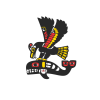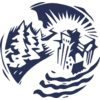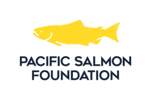James Goldie, Cowichan Valley Citizen, May 20, 2016
![Storage of water in Cowichan Lake is significantly lower than last summer, which could lead to dire consequences for the Cowichan River this summer. ÔÇö image credit: [James Goldie/Citizen] Cowichan River](https://cowichanwatershedboard.org/wp-content/uploads/2016/05/CowichanRiver-Citizen-20May2016.jpg) The Cowichan River is in danger of drying up this year, and Catalyst Paper Corporation, which controls the flow of water through the Cowichan Lake weir, has begun reducing the outflow of water in order to keep that from happening.
The Cowichan River is in danger of drying up this year, and Catalyst Paper Corporation, which controls the flow of water through the Cowichan Lake weir, has begun reducing the outflow of water in order to keep that from happening.
It may seem counter intuitive — reducing the flow of water out of the lake at a time when creeks and tributaries are already drying up — but if the outgoing water isn’t slowed down now, what’s held back by the weir in storage will be tapped out by the beginning of July.
According to Cheri Ayers, co-chair of the Cowichan Watershed Board’s Flows and Fish working group, the situation is dire.
“There’s been an emergency authorization to vary and reduce the current outflow,” she said.
“Basically what that means is by May 27 we’ll be at low summer flows, so it’s a lot earlier than what’s normal… That will help conserve the remaining water in the lake to keep the flows in the river until somewhere in the beginning of September.”
Ayers used the analogy of robbing Peter to pay Paul to describe the reduced water flow.
A lack of rain this spring and little water from snow packs is the cause of the water crisis.
In 2015 the region experienced an unprecedented drought, and so far the water levels in the lake are already substantially lower than they were this time last year.
According to Catalyst’s environment manager Brian Houle, on May 16, 2015, the lake had 86 per cent of its stored water left to be dispersed into the river until the fall rainy season. On May 16 of this year, the water stores were significantly more depleted.
“We have 53 per cent of the stored water available to meter out for the rest of the dry season unless we get some input. Rain or things like that,” said Houle. “This year we thought we had some snow pack but it didn’t appear to help us.”
The weir holds back water at 162.37 metres; the current level of the lake is 161.91 metres.
Reducing the flow of water into the river means although it will ideally continue flowing until the end of the summer, it has made conditions much more hazardous for fish. Young fry and fish depend on the rearing habitat along the sides of the river, but the reduced water flow means these areas are drying up, forcing the small fish into the main portion of the river.
“We’ve been quite concerned about steelhead, reds and side channel and tributary connectivity, so fish fry — coho and chinook, for example — are up in the side channels and those side channels are being isolated earlier than normal, so we’ll have to do more salvaging and we will lose some fish,” said Ayers.
“We’re going to lose a lot of fry in the river over the next month, but we will sustain that river flow until the beginning of September and hope between now and then we get some rain.”
While no one can control when it will rain next, Ayers pointed out that water conservation is an issue all residents can help with as the dry weather continues.
Lake Cowichan Mayor Ross Forrest, who co-chairs the Fish and Flows working group with Ayers, echoed this sentiment.
“People have to be very cognizant of the fact that there is going to be a restriction on water again this summer is the way it’s looking,” said Forrest.
“We have to be aware of that and conserve wherever we can. Every little bit is going to be a help.”
 Email
Email



